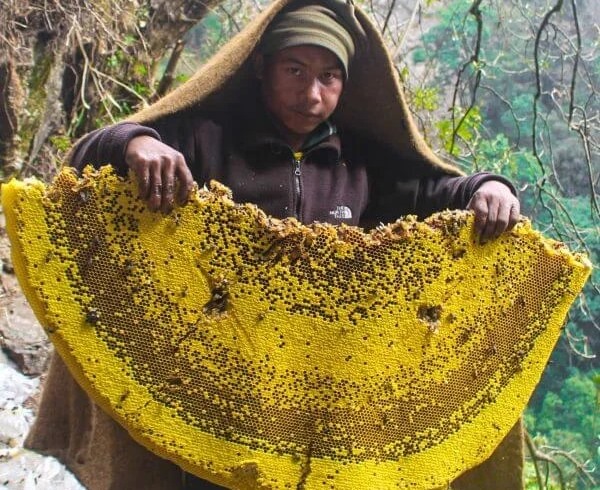
The world’s largest bees produce some of the most coveted honey known as “mad honey,” a rare, hallucinogenic substance that commands a hefty price on the black market. Harvesting this extraordinary honey requires scaling perilous cliffs in the Himalayas, where daring honey hunters risk their lives for the prized liquid.


Mad honey results from bees feeding on the pollen of rhododendron flowers, specifically Rhododendron luteum and Rhododendron ponticum. These flowers contain grayanotoxin, which can induce a range of dramatic reactions, including hallucinations, a slowed heartbeat, and, in severe cases, temporary paralysis or unconsciousness.

Historical accounts provide fascinating glimpses into the effects of mad honey. Xenophon of Athens, a student of Socrates, documented one of the earliest known incidents in 401 B.C. Greek soldiers traversing Asia Minor, now part of Turkey’s Black Sea region, encountered mad honey. After consuming the honey stolen from beehives, they experienced vomiting, diarrhea, disorientation, and an inability to stand.

In 69 B.C., Pompey the Great’s army fell victim to mad honey in the same region. The soldiers exhibited similar symptoms, including a loss of motor control akin to severe intoxication. Fortunately, no enemies attacked them during this vulnerable period. After three to four hours, the army regained enough strength to continue their march.

The allure of mad honey persists to this day, not only for its unique effects but also for the daring feats of those who risk their safety to harvest it.

Leave a Reply